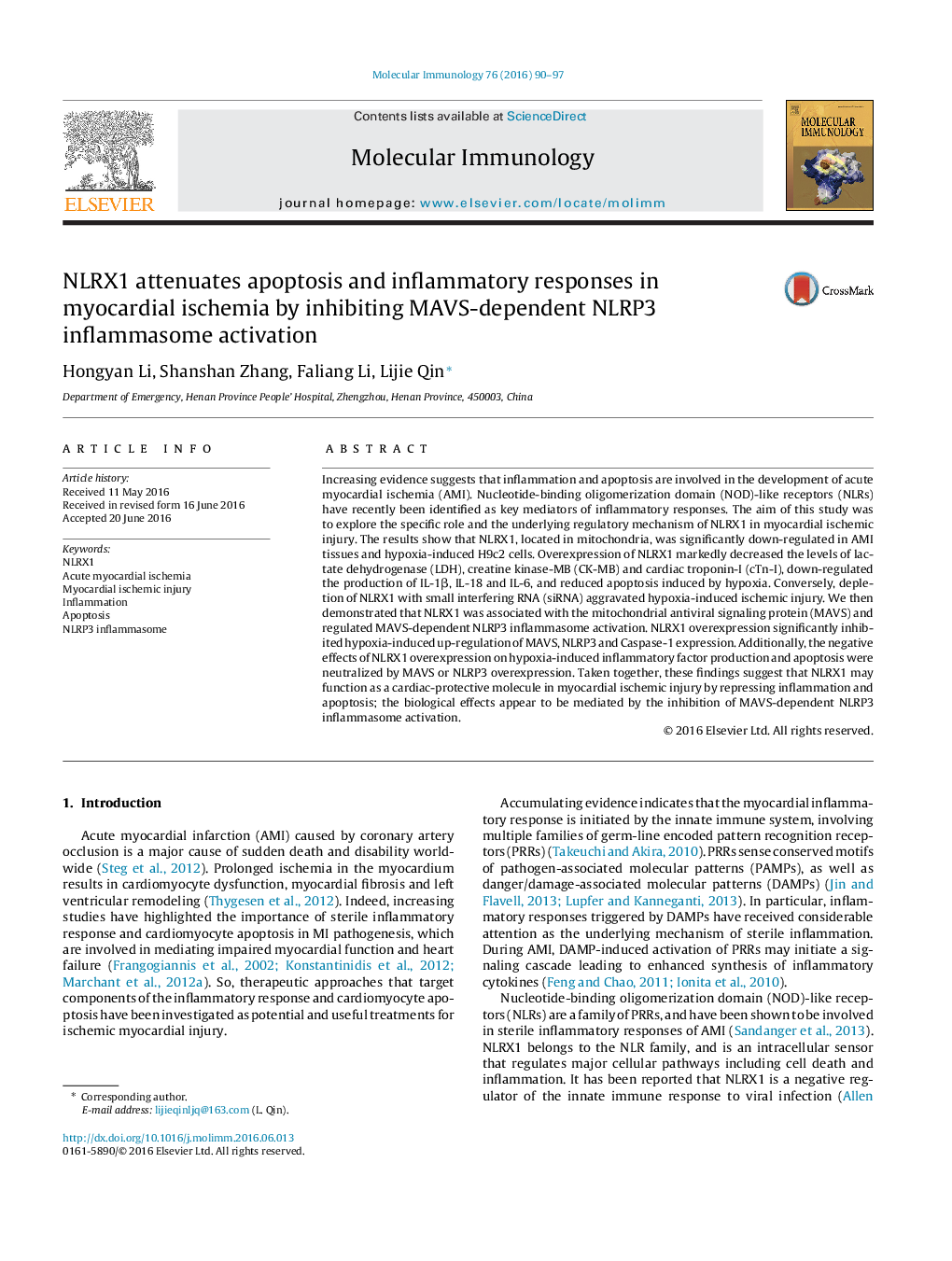| Article ID | Journal | Published Year | Pages | File Type |
|---|---|---|---|---|
| 5916300 | Molecular Immunology | 2016 | 8 Pages |
Abstract
Increasing evidence suggests that inflammation and apoptosis are involved in the development of acute myocardial ischemia (AMI). Nucleotide-binding oligomerization domain (NOD)-like receptors (NLRs) have recently been identified as key mediators of inflammatory responses. The aim of this study was to explore the specific role and the underlying regulatory mechanism of NLRX1 in myocardial ischemic injury. The results show that NLRX1, located in mitochondria, was significantly down-regulated in AMI tissues and hypoxia-induced H9c2 cells. Overexpression of NLRX1 markedly decreased the levels of lactate dehydrogenase (LDH), creatine kinase-MB (CK-MB) and cardiac troponin-I (cTn-I), down-regulated the production of IL-1βï¼IL-18 and IL-6, and reduced apoptosis induced by hypoxia. Conversely, depletion of NLRX1 with small interfering RNA (siRNA) aggravated hypoxia-induced ischemic injury. We then demonstrated that NLRX1 was associated with the mitochondrial antiviral signaling protein (MAVS) and regulated MAVS-dependent NLRP3 inflammasome activation. NLRX1 overexpression significantly inhibited hypoxia-induced up-regulation of MAVS, NLRP3 and Caspase-1 expression. Additionally, the negative effects of NLRX1 overexpression on hypoxia-induced inflammatory factor production and apoptosis were neutralized by MAVS or NLRP3 overexpression. Taken together, these findings suggest that NLRX1 may function as a cardiac-protective molecule in myocardial ischemic injury by repressing inflammation and apoptosis; the biological effects appear to be mediated by the inhibition of MAVS-dependent NLRP3 inflammasome activation.
Keywords
Related Topics
Life Sciences
Biochemistry, Genetics and Molecular Biology
Molecular Biology
Authors
Hongyan Li, Shanshan Zhang, Faliang Li, Lijie Qin,
